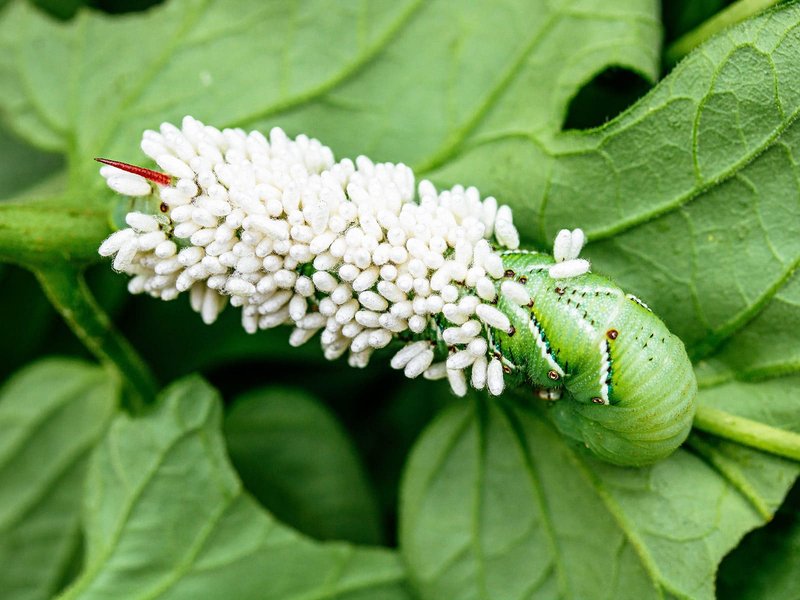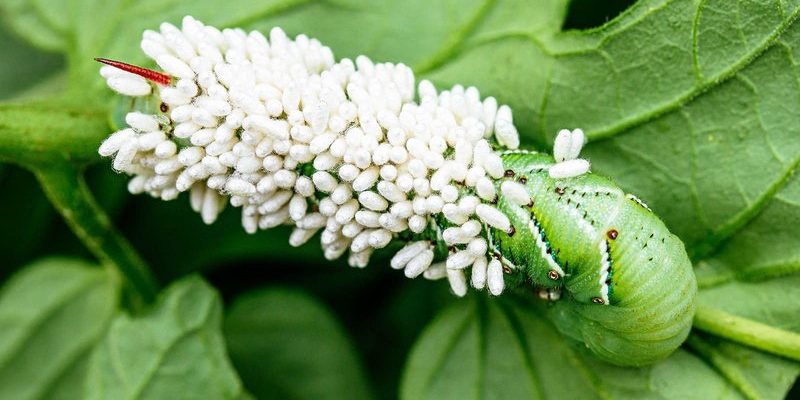
Imagine your garden as a bustling arena, where every creature plays a role. Just like a good movie needs its heroes and villains, your garden thrives with the right balance of birds and insects. If you can coax those feathered hunters to visit, they’ll help keep your hornworm problem in check and bring a lively atmosphere to your outdoor space. So, let’s dive into how you can make your garden irresistible to these helpful birds.
Understanding the Role of Birds in Controlling Hornworms
Birds play an essential part in maintaining the balance of your garden’s ecosystem. Just as a good chef knows what ingredients make a dish flavorful, birds know exactly which pests to target. Hornworms, with their appetites for your plants, are on the menu for many bird species.
Some common birds that help control hornworm populations include **blue jays**, **sparrows**, and **wrens**. These feathered friends have sharp eyes and quick reflexes, making them excellent at spotting these green caterpillars. The more you learn about these birds, the better you can attract them to your garden.
One way to understand their role is to think of them as nature’s own pest control service. Instead of relying on chemical sprays, you invite in these natural predators. They’ll swoop in, eat the hornworms, and help keep your plants healthy. It’s like having superheroes in your garden, working hard to save the day while you enjoy the beautiful scenery!
Choosing the Right Birds to Attract
Not all birds are equal when it comes to munching on hornworms. It’s essential to know which varieties are best suited for the job. Some birds are more willing to dine on these pests than others. For example, **American robins** and **Eastern bluebirds** are notorious for their hornworm-snacking habits. They not only eat the hornworms but also help control other pests, making them great allies in your garden.
So, how do you go about attracting these specific birds? First, tailor your garden to suit their needs. Native plants that provide shelter and nesting sites are crucial. You might want to consider planting **sunflowers** or **native wildflowers** that attract not just the birds but also beneficial insects.
It’s also helpful to know what these birds like to eat. While they’ll happily munch on hornworms, they also appreciate seeds, berries, and insects. By offering a variety of food sources, you make your garden a desirable retreat for these helpful visitors.
Providing Natural Habitats
Creating a welcoming environment for birds means mimicking their natural habitats. Just as you might spruce up your living room for guests, you want to make your garden inviting. Here are a few simple ideas to get you started:
- Plant native trees and shrubs: These provide shelter for nesting and resting, making your garden a safe haven.
- Include water sources: A birdbath or shallow dish of water will keep birds hydrated and encourage them to stick around.
- Avoid pesticides: Remember, pesticides can harm the very birds you’re trying to attract. Go for natural gardening methods instead.
By incorporating these features, you’re not just attracting specific birds; you’re also creating an entire ecosystem that thrives. Think of your garden as a cozy hotel for birds—they’re more likely to check in if it feels like home!
Feeding Birds to Lure Them In
While hornworms can be a tempting snack, sometimes you need to sweeten the deal a bit. Offering additional food can help entice birds. Here’s how you can do it:
- Seed feeders: Fill them with a mix of seeds that attract various birds. Black-oil sunflower seeds are a favorite.
- Fruit stations: Set out slices of apples or oranges. Many birds, like robins, are drawn to fruit.
- Mealworms: Consider putting out live or dried mealworms. They’re a protein-rich snack that birds love.
You might be wondering how to keep these feeding stations clean. It’s essential to routinely clean feeding areas to prevent disease. Just like you don’t want a dirty kitchen at home, birds prefer a tidy space too.
Remember, the goal is to create a buffet that attracts not just the birds, but also encourages them to stay around long enough to do their job—eating those pesky hornworms!
Creating Shelter and Nesting Areas
Just as we all love a cozy spot to curl up, birds need shelter and places to nest. You can provide these essentials in your garden with a few thoughtful touches:
- Nest boxes: Hang up birdhouses suited for the types of birds you want to attract. Ensure they’re located in safe, quiet spots.
- Dense shrubs: Plant thick bushes that help provide cover from predators.
- Brush piles: Leave some small piles of branches or natural debris. These can create ideal hiding spots for many species.
Providing shelter isn’t difficult, and it’s a great way to increase the likelihood of birds visiting your garden. Think of it as giving them a comfy Airbnb—something they can’t resist!
Maintaining a Healthy Garden Ecosystem
Keeping your garden healthy is crucial for attracting birds that prey on hornworms. When your plants are thriving, it encourages birds to visit. Here are some tips for maintaining that ecosystem:
- Practice crop rotation: This helps prevent hornworm infestations and maintains soil health.
- Plant companion crops: Flowers like marigolds can deter pests while attracting beneficial insects.
- Regularly inspect plants: Quick action against pests can prevent them from taking over, ensuring a healthy environment for birds.
By integrating these practices into your gardening routine, you’re not just focusing on hornworm control. You’re cultivating a thriving, balanced ecosystem where birds can flourish. It’s a win-win situation for you and your garden!
Attracting birds that prey on hornworms is about creating a harmonious relationship between your garden and nature. By inviting these feathered friends, you’re making a choice that benefits both your plants and the environment. It’s like hosting a delightful gathering where everyone plays a part in the beauty of your outdoor space.
Remember to be patient. It might take some time for the birds to discover your garden buffet, but once they do, you’ll enjoy the sights and sounds of a lively ecosystem at work. Watching birds swoop in to snatch a hornworm is not just satisfying; it’s a reminder that with a little effort, we can maintain balance in nature. So, get started today, and transform your garden into a sanctuary for both plants and birds alike!

